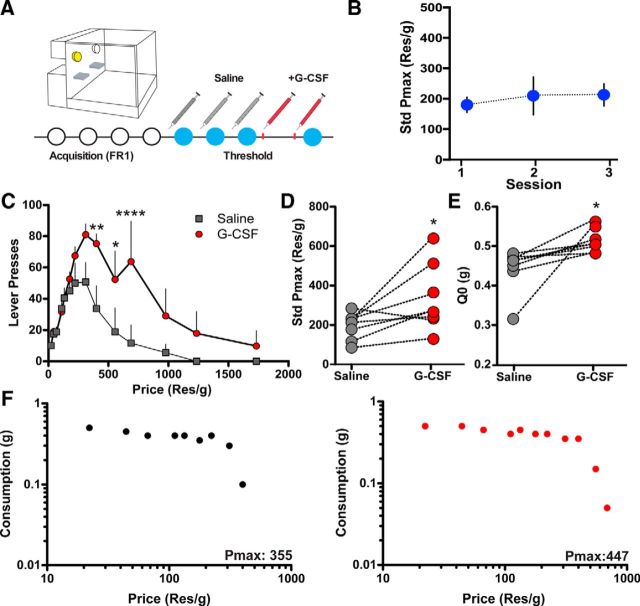Figure 1.
G-CSF increases the motivation for highly salient rewards. A, Timeline of behavioral economic assessment of sucrose reinforcement. Animals were injected with saline before behavioral testing for three sessions to establish a baseline. To determine the effects of G-CSF animals were injected with G-CSF twice, once 24 h before and a second time 60 min before, and the effect on economic parameters was determined (n = 8 per group). B, Pmax did not change across time in the saline treatment sessions. C, The number of lever presses over increasing price for sucrose. Animals treated with G-CSF emitted more lever presses overall than their pretreatment baseline. D, Standardized Pmax values highlighting that G-CSF within-subject increased the maximal price an animal would pay in effort to obtain sucrose pellets. E, G-CSF treatment also increased Q0, a measure of consumption at a minimally constraining price. These data highlight that G-CSF, a peripheral cytokine, is capable of enhancing the motivational properties of salient stimuli. F, Representative data from an animal treated with saline (left) and then G-CSF (right). G-CSF increased the Pmax for sucrose. *p < 0.05, **p < 0.01, ****p < 0.0001 from saline treated. All data are presented as mean SEM.

